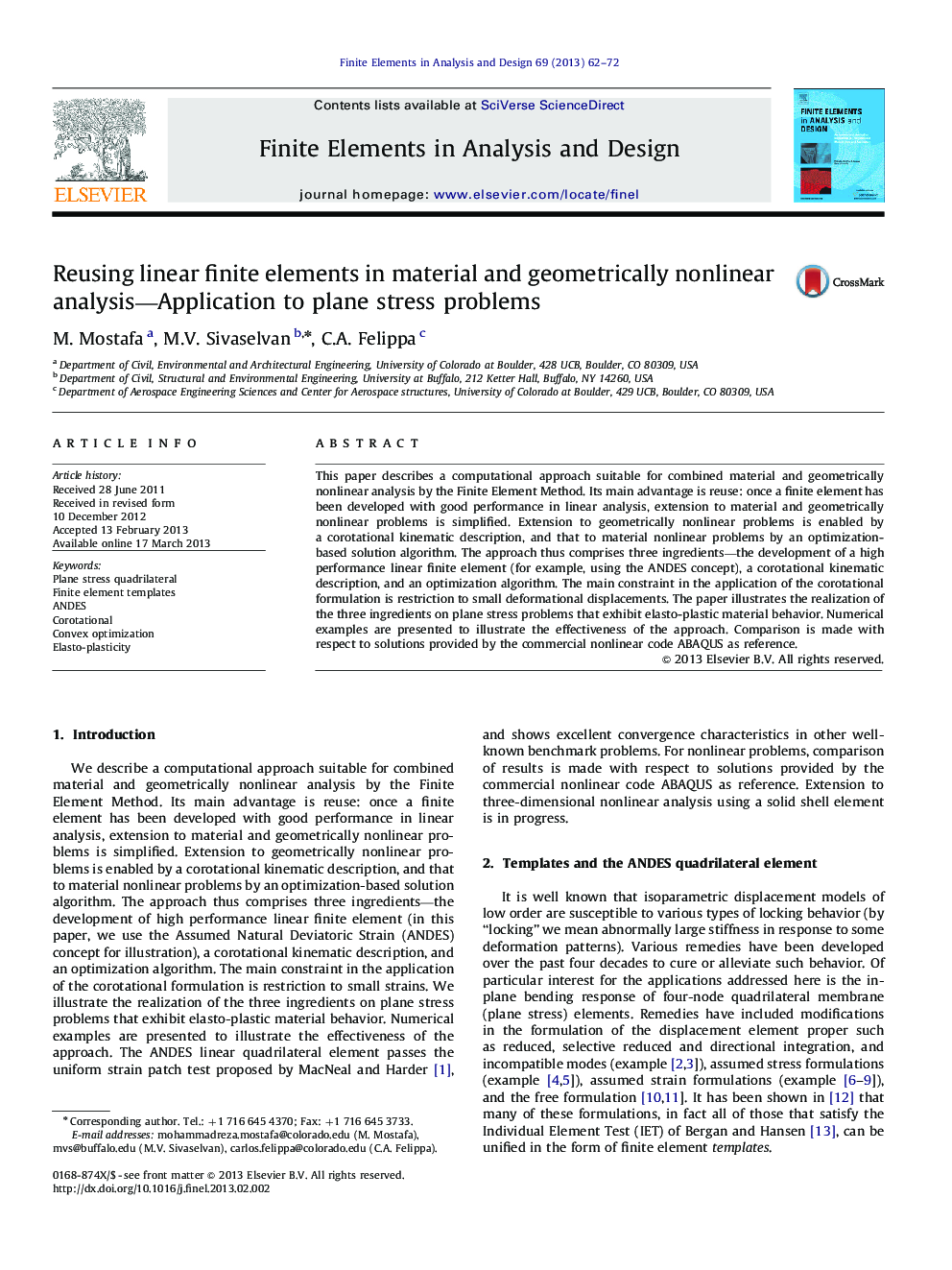| Article ID | Journal | Published Year | Pages | File Type |
|---|---|---|---|---|
| 514560 | Finite Elements in Analysis and Design | 2013 | 11 Pages |
This paper describes a computational approach suitable for combined material and geometrically nonlinear analysis by the Finite Element Method. Its main advantage is reuse: once a finite element has been developed with good performance in linear analysis, extension to material and geometrically nonlinear problems is simplified. Extension to geometrically nonlinear problems is enabled by a corotational kinematic description, and that to material nonlinear problems by an optimization-based solution algorithm. The approach thus comprises three ingredients—the development of a high performance linear finite element (for example, using the ANDES concept), a corotational kinematic description, and an optimization algorithm. The main constraint in the application of the corotational formulation is restriction to small deformational displacements. The paper illustrates the realization of the three ingredients on plane stress problems that exhibit elasto-plastic material behavior. Numerical examples are presented to illustrate the effectiveness of the approach. Comparison is made with respect to solutions provided by the commercial nonlinear code ABAQUS as reference.
► A method is proposed for reusing linear finite elements in material and geometric nonlinear analyses. ► Reuse in geometric nonlinear analyses is through use of corotational kinematics. ► Reuse in material nonlinear analyses in through an optimization algorithm. ► As an example of a linear element, an ANDES quadrilateral, which is an instance of a general finite element template, is used.
